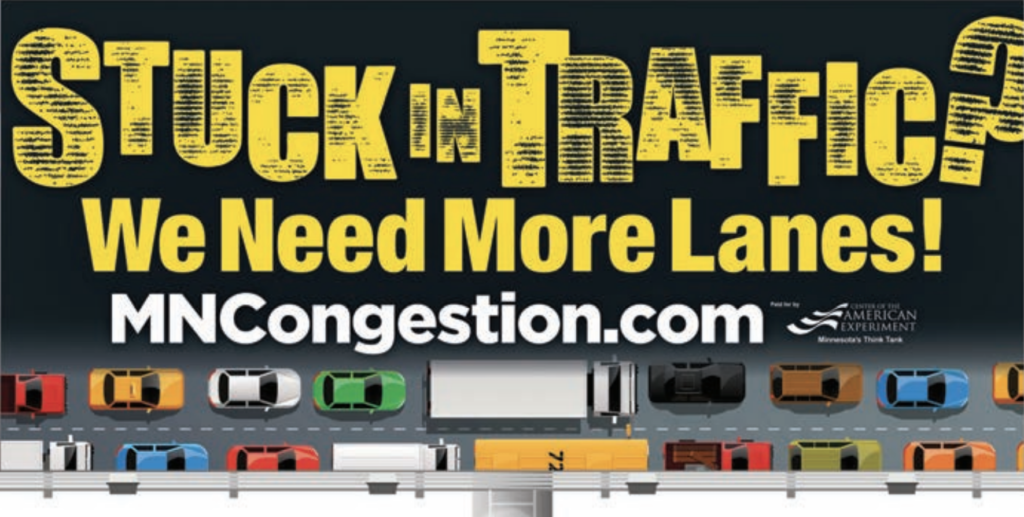Traffic congestion is a strategy
American Experiment campaign highlights that the Met Council and MnDOT have no plan to relieve congestion. In fact, they like it.
Center of the American Experiment recently unveiled its 2018 campaign to alert Minnesota commuters that increased traffic congestion “is no accident.”
The campaign’s opening volley is a pair of billboards located near the intersection of Highways 494 and 35W in Bloomington. A radio campaign is underway, and additional billboards will be added through the summer.
American Experiment launched its effort in May 2017 when it commissioned a paper by nationally-acclaimed scholar Randal O’Toole, “Twin Cities Traffic Congestion: It’s No Accident.” The paper emphasized that Twin Cities congestion is largely attributable to poor, politically-motivated decisions by unelected bureaucracies. The Met Council, in particular, has prioritized trains and bicycle paths over highways and roads, thereby making congestion worse, not better.
The Center augmented the paper with an aggressive media campaign that included a website (MNCongestion.com), radio ads, billboards and bumper stickers.
O’Toole’s paper revealed that the Twin Cities is the 22nd most congested urban area in the United States, and home to four of the 100 most congested spots in the country, more than Chicago, Los Angeles, and New York. John Hinderaker, American Experiment’s president, said 2018 research shows that the Twin Cities now have five of the country’s worst traffic bottlenecks. Only Atlanta and Houston have more.
Because of worsening congestion, average Twin Cities commuters spent four times as much time stuck in traffic in 2014 as they did in 1982.
“Our message is simple but powerful,” says Hinderaker. “The problem with traffic in the Twin Cities, which is much more congested than other comparable U.S. cities, is an inadequate system of highways and roads. Minnesotans have to use their vehicles to get where they need to go, and the only way to ease bottlenecks is by providing adequate traffic lanes. Bicycles and exorbitantly expensive fixed rail lines are never going to do the trick.”
“This is really a political issue,” he added. “We have unelected agencies who are trying to force us out of our cars and onto bicycles. They are taking away lanes and putting in bike lanes. They are doing everything but the one thing they can do to relieve traffic. And that is adding more lanes of highways and roads.”
“Both the Metropolitan Council and MnDOT have said they are no longer trying to lessen congestion. That is no longer one of their goals,” Hinderaker said.
The Met Council’s 2030 transportation plan admitted that “the Council recognizes that congestion will not be eliminated or significantly reduced in the Metropolitan Area.” Instead of reducing congestion on the roads, the Met Council wants to take advantage of horrific commute times to force Twin Cities residents onto trains, buses and bicycles.
The Met Council’s 2040 plan calls for spending $6.3 billion on “transitways,” principally light rail lines, and only $700 million on increasing road capacities. Incredibly, the Council proposes that an equal amount—$700 million—be spent on bike and pedestrian paths and safety enhancements.
